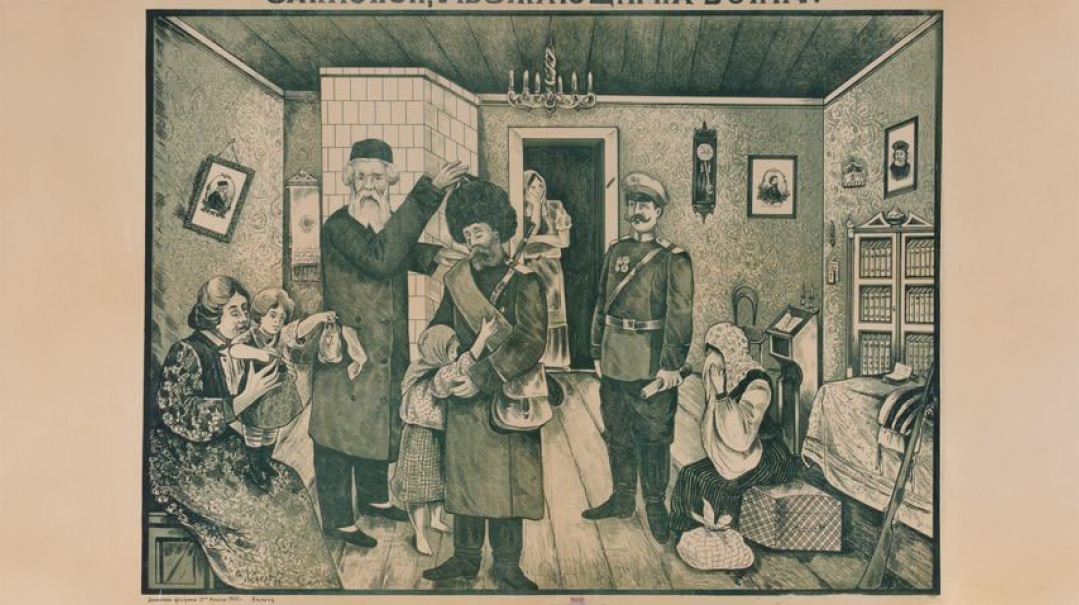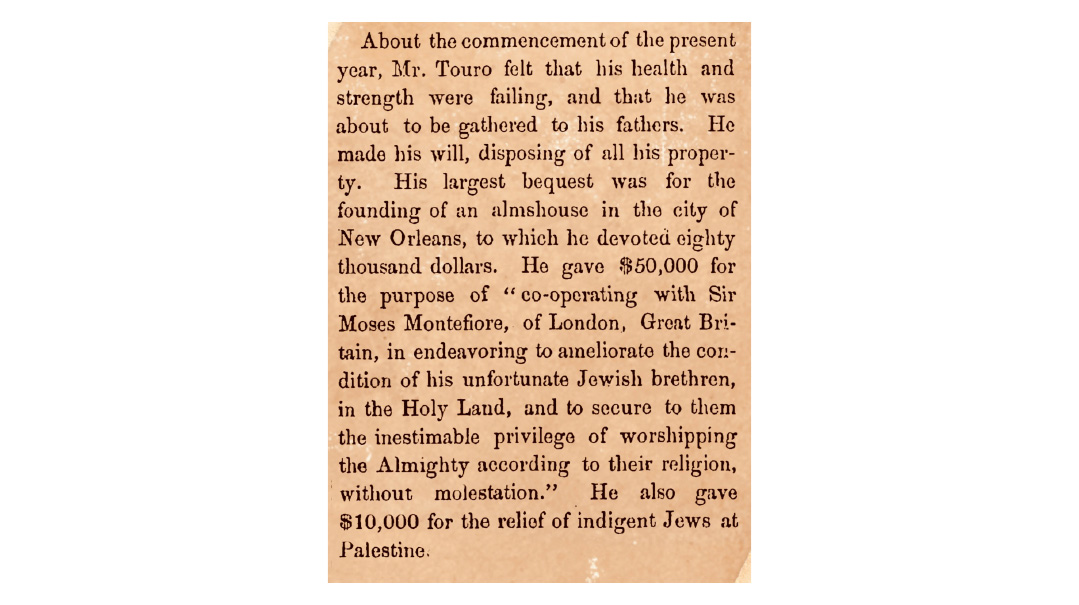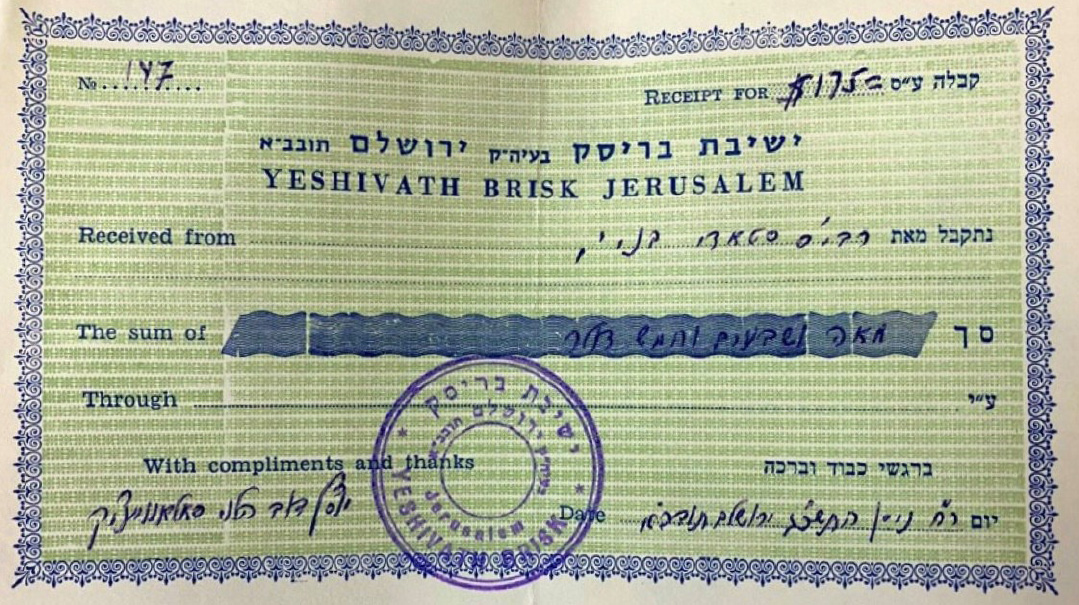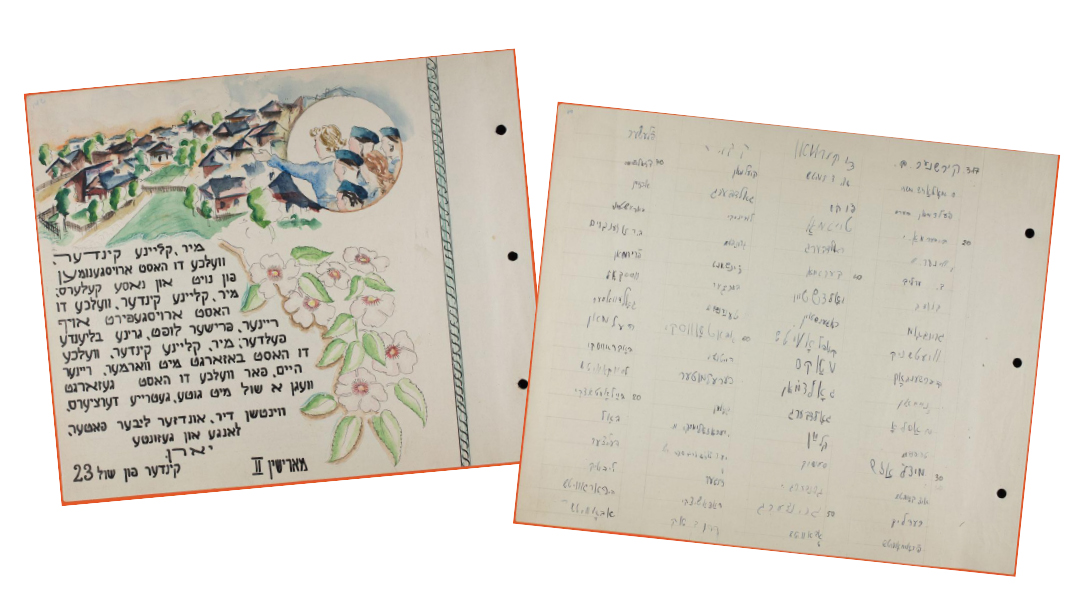Orphans of The Holy City
| February 4, 2025The Zion Blumenthal Orphanage’s initial home was one of the most imposing structures in all of Jerusalem
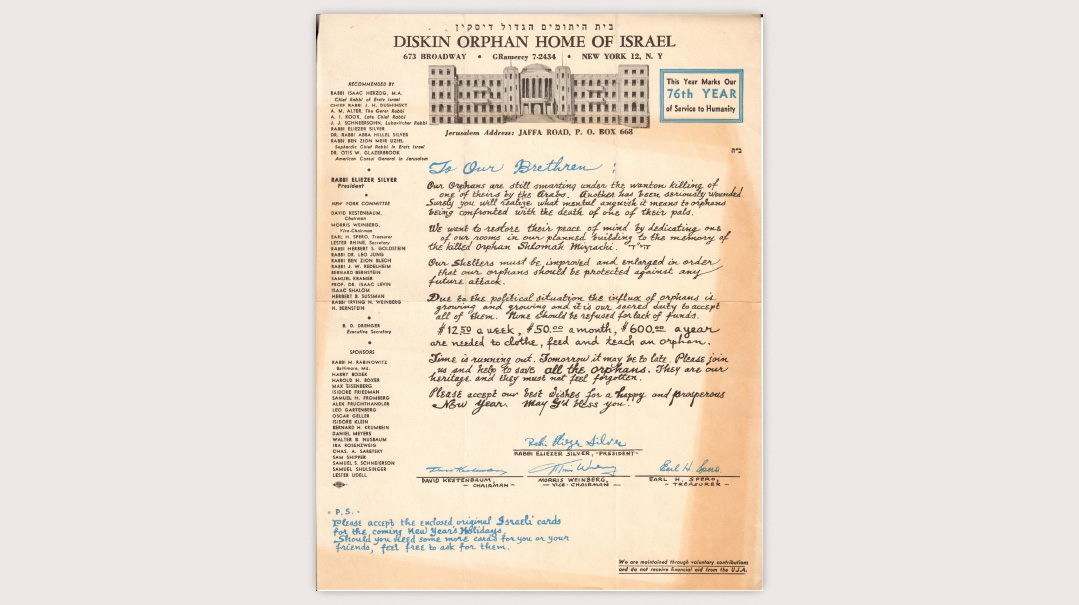
Title: Orphans of The Holy City
Location: Jerusalem
Document: Fundraising Circular
Time: Early 1950s
Jerusalem’s orphan population grew dramatically in the 19th and early 20th centuries, due to a tragic convergence of factors. Dire poverty, lack of hygienic conditions, and poor health care infrastructure all led to a high death rate from malnutrition and disease in the Old Yishuv. There were also many children whose parents were alive but unable or unwilling to raise their children due to their circumstances.
Christian missionaries targeted these poor and vulnerable elements of the population in the waning years of Ottoman control of Jerusalem. To spread their faith, they founded a handful of orphanages, the most famous of which was the Schneller Orphanage established in 1860 by German Protestants in today’s Geula neighborhood (then a desolate area outside the Old City walls). The pernicious effects on young Jewish orphans of growing up in a Christian environment were bad enough, but these orphanages actually baptized the orphans.
Shortly after his arrival in Jerusalem in 1877, the great rabbi of Brisk, Rav Yehoshua Leib Diskin, decided to do something about this catastrophic situation. He and his wife began by simply hosting Jewish orphans in their home in the Old City’s Muslim Quarter. When the number of orphans he took in made this temporary solution untenable, he rented space nearby that became the first official residence of the Diskin Orphanage.
The goal of the orphanage was to provide a home environment and a religious upbringing, to ensure that these children wouldn’t fall into the hands of the missionaries. Orphans and children abandoned by parents showed up and were well taken care of by Rav Yehoshua Leib Diskin’s capable staff. He shepherded the orphanage until he passed away in 1898, when leadership went to his son Rav Yitzchak Yerucham Diskin, who ran it until his own passing in 1925.
As new Jerusalem neighborhoods developed outside the Old City walls, the Diskin Orphanage moved out to Rechov Haneviim in 1907. Only male orphans stayed at Diskin, although an unrelated orphanage for girls operated for a time nearby. In 1927, the Diskin Orphanage dedicated a massive edifice on sprawling grounds in Givat Shaul, then the outskirts of Jerusalem. The new institution could house 500 orphans.
In 1902, the rabbinical leadership of Jerusalem’s Sephardic community saw a need to establish an orphanage to keep its needy members out of the clutches of Christian missionaries. The Vaad Ha’eidah Hasepharadit, led by Rav Yaakov Meir, Rav Benzion Meir Chai Uziel, and the Chacham Bashi (chief rabbi) Rav Yaakov Shaul Elyashar, rented a handful of apartments in the Old City to house the orphans.
Two years later, the Boruchof and Yissacharoff families of Bukhara donated funds for a large, beautiful building to be constructed in the city’s outskirts off of Rechov Yaffo, right near today’s Machaneh Yehudah shuk, with a trust fund to maintain the institution over time. The building, which would be completed in 1908, housed young male orphans.
In 1906, the institution published its bylaws and mission statement, which mandated that the building be spacious, light, and airy, with abundant greenery on the surrounding grounds. Noting that the primary impetus for the orphanage’s establishment was the immediate danger posed by Anglican Church missionaries, the goals specified that the young charges receive religious and general education as well as vocational training to prepare them to enter the workforce and support themselves. Interestingly enough, in addition to Torah and general subjects, the classes — which were all taught in Hebrew — included instruction in Arabic, “the language of the land,” and “the language of the country,” Ottoman Turkish.
During World War I, the Sephardic Orphanage building was requisitioned by the German military, who used the upper floor for officers and the ground floor for storage and horse stables. The orphanage regained possession of the building after the war and went on to provide a safe haven for hundreds of young boys for decades. The building was not only aesthetically designed but incorporated many modern features, such as privacy for its residents, porches, private entrances, and a central courtyard with plenty of sunshine and space for recreation.
The ravages of war — disease, poverty, and starvation, but even more so the deaths of Jews from the Yishuv serving as Ottoman soldiers who were killed on the battlefield — only fed the demand for orphanages. The Ottoman governor of Jerusalem asked Chacham Bashi Rav Nissim Yehudah Danon to establish a new orphanage in 1917. Since many of the war orphans’ fathers had been killed fighting for the Ottoman Empire, the governor promised to assist with funding for the new institution.
Rav Danon asked a prominent educator named Rav Avraham Yochanan Blumenthal to open an orphanage. It was initially named the Zion Orphanage, and it still exists as today as the Zion Blumenthal Orphanage, bearing the name of its founder.
When the British took control of Palestine after World War I, the Ottoman funding disappeared, so Rav Blumenthal had to raise his own funds for the burgeoning institution. He was assisted by his brother Rav Aharon Simcha Blumenthal, who moved to New York, opened an office of the orphanage there, and for decades oversaw the fundraising apparatus with great dedication. Unlike previous orphanages that served specific communities in the Old Yishuv, Rabbi Blumenthal’s orphanage was the first to explicitly state that it was open to all Jewish orphans of Yerushalayim, irrespective of background or ethnic affiliation.
The Zion Orphanage was first housed in the famous Yehudayof-Chefetz mansion in the Bukharan neighborhood (on today’s Rechov Ezra). The premises included a Talmud Torah and yeshivah ketanah. In its first decade of operations, the Zion Orphanage cared for over 500 orphans.
The orphanage outgrew its first home by 1934 and a new building was constructed and dedicated with great ceremony in the Bukharan neighborhood. Rav Avraham Yitzchak Kook served as the orphanage’s official president during its early years. Many international Jewish bodies sent orphans from around the world for care at the Zion Blumenthal Orphanage, known for raising its young charges in a warm, familial, and religious environment. By 1964, the Zion Blumenthal Orphanage once again needed larger facilities, and a new building was constructed for it on Rechov Yechezkel at the edge of the Bukharan neighborhood, where it remains to this very day.
Fortress of Refuge
During the 1929 pogroms, Arabs from the nearby village of Lifta attacked Givat Shaul, and residents found shelter in the fortress-like Diskin Orphanage building. An orphanage employee, along with two neighborhood residents and a Bri officer, were killed during the rampage.
The Orphans’ Palace
The magnificent Yehudayof-Chefetz mansion — the Zion Blumenthal Orphanage’s initial home — was one of the most imposing structures in all of Jerusalem and was known colloquially as “the Palace.” Although the orphanage operated at full capacity, notable public events were held in the prominent building’s central hall. These included a grand reception for General Sir Edmund Allenby, upon the establishment of Bri control of Jerusalem; and the official ceremony at which Rav Yaakov Meir and Rav Avraham Yitzchak HaKohein Kook were officially designated the first chief rabbis. Although the orphanage had long vacated these quarters by 1944, the first in Jerusalem of the Belzer Rav, Rav Aharon Rokeach, was then held there.
(Originally featured in Mishpacha, Issue 1048)
Oops! We could not locate your form.


